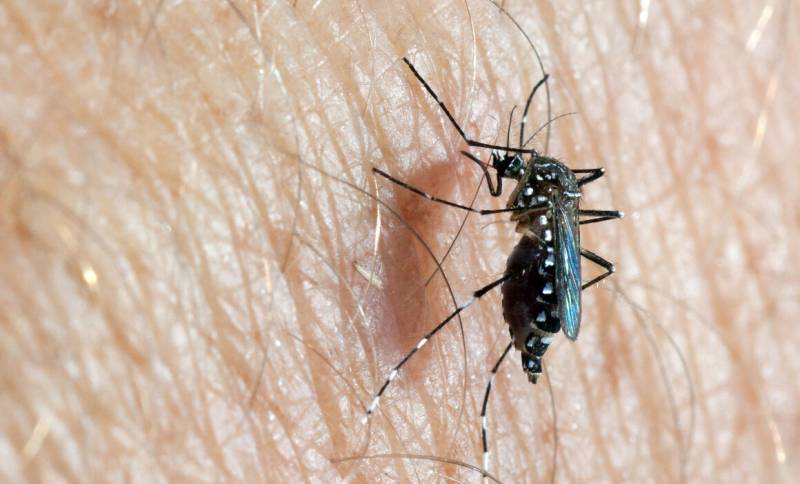
Pakistan witnessed an alarming rise in vector-borne diseases through 2023, taking a severe public health and economic toll. Increased rates of illness and death associated with mosquito and tick-transmitted diseases like malaria, dengue, chikungunya and Crimean-Congo hemorrhagic fever (CCHF) plagued many districts. Vulnerable populations like children and older adults were impacted disproportionately. Significant policy and practical interventions will be essential in 2024 to reverse this trend.
Malaria has reemerged as a top concern in the country, witnessing a 25% increase in cases in 2023. Changing environmental patterns and recent floods create mosquito breeding grounds in areas where malaria transmission was minimal. Economic deprivation in rural communities has also exacerbated malaria risks and outcomes. Areas bordering Iran and Afghanistan have endured particular spikes, which officials attribute to uncontrolled transmission and population movement across borders.
Dengue virus represented another critical mosquito-borne threat to Pakistan in 2023, infecting over 50,000 individuals nationwide with recurrent outbreaks peaking from August to November post-monsoons. Densely populated cities like Lahore, Karachi, Peshawar, Rawalpindi and Multan were especially hard-hit.
As the federal government ramps up urgently needed countermeasures, provincial administrations must also escalate prevention and treatment access through health system strengthening, anti-mosquito spraying, diagnostic testing supplies and quick response outbreak investigation teams. Overseas development assistance targeting high-transmission zones has been limited lately, making robust domestic budget allocations and malaria control policies imperative next year.
Dengue virus represented another critical mosquito-borne threat to Pakistan in 2023, infecting over 50,000 individuals nationwide with recurrent outbreaks peaking from August to November post-monsoons. Densely populated cities like Lahore, Karachi, Peshawar, Rawalpindi and Multan were especially hard-hit. But smaller communities have not been spared either.
Better urban planning and management are essential to limit mosquito habitats in water storage vessels, tires, flower pots, etc, which commonly propagate virus transmission to humans through mosquito bites. Repeated government campaigns on household cleanliness and the use of protective clothing or mosquito repellants will also raise public awareness. However, fixing unreliable piped water and sanitation infrastructure, improving waste disposal, and targeting insecticide fogging remains key to securing at-risk neighborhoods across Pakistan’s growing urban landscape, which will house over half its projected 250 million population by 2030.
Chikungunya virus represented another looming threat seen in prior years but caused illness during 2023, particularly in vulnerable elderly. Joint and muscle pain often lasted months, severely limiting mobility and ability to work for affected households, driving them into poverty.
The long-term crippling effects demand urgent countermeasures next year, including active disease surveillance, mosquito population control and social support schemes that provide medical referrals or income assistance for families struck by mosquito-borne diseases. Research into viral transmission factors and outbreak mitigation must be fast-tracked. At the same time, clinicians require additional training to accelerate diagnosis and manage complex symptoms in hospitals strained by recurrent emerging epidemics.
Meanwhile, Crimean-Congo hemorrhagic fever caused by ticks represented another stark vector-borne threat this year as rising temperatures expand favorable habitats for infected livestock and tick populations to move northward. Poor rural communities suffer the most deaths, now exceeding 50 annual fatal cases, as lack of awareness delays critical treatment.
Urgent integrated programs encompassing surveillance, diagnosis/treatment access, public education, vector control and targeted assistance for vulnerable groups will be essential across Pakistan’s provinces.
Stocking ribavirin antiviral therapy and protective gear for healthcare workers in frontline clinics needs to be an urgent budget priority. Promoting safer livestock rearing and herding practices can limit exposure in high-risk groups until durable agricultural policies curb regional climatic and tick-proliferation trends, which drive repeated viral outbreak clusters and deaths.
Pakistan’s escalating vector-borne disease burden through 2023 exposes glaring health system deficiencies demanding major corrective action in the coming year. Malaria’s resurgence after previous elimination successes is disconcerting. Dengue and chikungunya now pose yearly viral threats from August to November. Meanwhile, erstwhile sporadic diseases like Crimean-Congo hemorrhagic fever have become recurring killers.
Urgent integrated programs encompassing surveillance, diagnosis/treatment access, public education, vector control and targeted assistance for vulnerable groups will be essential across Pakistan’s provinces. To orchestrate effective outbreak responses, federal oversight and coordination with provincial district authorities need strengthening. Healthcare capacity building and clinics stocked with essential diagnostics/medicines should become a top national priority to lessen the annual vector-borne disease burden. The scope remains for global partnerships and overseas Pakistanis to contribute towards this vital cause as well.
Sustained commitment and mobilization of commensurate resources will be imperative in 2024 to reverse Pakistan’s rising vector-borne disease misfortunes and protect the most susceptible communities being impacted disproportionately. This is crucial for saving lives and ensuring the country’s sustainable socioeconomic development trajectory in the face of climate change adversities.

